YOUNGSTOWN, Ohio – Failing to plan is planning to fail: This business truism, attributed to Benjamin Franklin, among others, is no less relevant today as the national and world economies face uncertainty.
Supply chain disruptions, rising prices and a workforce that is reassessing its relationship with employers are taking a toll across industries. Then, of course, there is the greatest disrupter of all: the pandemic.
So what is your plan for 2022? Not only for your business but for your family’s well being? We asked nine business professionals to offer some guidance.
Those interviewed are: Jeff Hedrich of the Prodigal Company, Tim Petrey of HD Davis CPAs, George Farris of Farris Marketing, Ellie Platt of Platt Insurance Group, Mark Richmond of Micro Doctor IT, Deanna Rossi of Transamerica Financial Advisors, Shane Nesbitt of Executive Computer Management Solutions, Molly Johnson of the Johnson & Johnson law firm, and Judy Sees from the accounting firm Schroedel, Scullin & Bestic.
Long-Term Planning
Jeff Hedrich, Prodigal Company

Jeff Hedrich, president and lead brand strategist at Prodigal in Boardman, offers his own favorite business quotation from Henry Luce, founder of iconic American magazines Time, Life and Fortune:
“Business more than any other occupation is a continual dealing with the future; it is a continual calculation, an instinctive exercise in foresight.”
Five-year planning in business is familiar, but nowadays looking ahead that far is difficult, Hedrich says. More businesses plan for two years, or even one, particularly with marketing.
“You plan and then you adapt as you go along. The plan is no longer set in stone,” he says.
For example, Prodigal client Farmers National Bank’s acquisition of Cortland Bank exposed the more than 130-year-old bank to new markets where it didn’t have a presence.
“So they’re looking at how do you market yourself to an audience that doesn’t know you,” Hedrich says. Much of that planning is learning what’s happening in those markets and identifying the competition, he says.
One of Prodigal’s manufacturing clients is slowing down its marketing because supply chain and employment issues could delay fulfillment of orders by four or five months, even a year, he says.
Other clients might continue marketing because customers who recognize supply chain problems are willing to make the purchase despite the wait. “It’s not what they want. But they’ll do that,” he says.
Focusing on Costs
Tim Petrey, HD Davis CPAs

The crux of all the conversations that we’re having with our clients, regardless of industry, comes to paying much closer attention to their business than they probably ever have in a lot of different capacities,” says Tim Petrey, managing member of HD Davis.
That means focusing on the current costs of goods and labor, what their historical margins are in their industry and inflation, and monitoring those costs more closely.
Inflation resulting from labor costs “is changing how we have to look at our business,” Petrey says.
“The people who are able to keep up with that and not fall behind are the people that are going to be successful for a lot of different reasons. If you’re charging the right price for the product or service that you’re selling, then you can afford to pay your employees the right price,” he says.
An employer unable to keep a “competitive and purposeful workforce” will continue to lose employees, he says.
HD Davis is preparing clients for retroactive changes in tax policy and continued inflation, Petrey says.
Consultants also are advising more clients on workplace culture and expanding benefits to remain competitive, as well as embracing work-life balance.
And clients are more willing to adapt, he says. Through outsourced chief financial officer and business coaching services, HD Davis encourages clients to try new things and be willing to “fall forward” and learn from their mistakes, he says.
Watch for Opportunities
George Farris, Farris Marketing

There’s a lot of opportunities in 2022,” says George Farris, CEO of Farris Marketing in Boardman.
Farris, a self-described optimist by nature, says there is every indication the economy is recovering and businesses on the right track will see revenue increases in 2022.
He advises companies to eliminate many of the business barriers the pandemic exposed – including inefficient websites – and to ensure they fully staff their chat, text and phones, and make sure people can respond as easily as possible.
His agency recommends hybrid marketing to combine earned, owned and paid media, and create messages that can bridge all media channels. Live streaming also adds a “new dimension” to marketing, he says.
“Nobody enjoyed 2021. But I really think it did change people’s perception and understanding of how they can do business,” Farris says. Businesses learned to make sales when customers couldn’t come into their stores. Meetings shifted from in-person to virtual and “we could still achieve what we need to achieve.”
Adjust Policies for Inflation
Ellie Platt, Platt Insurance Group
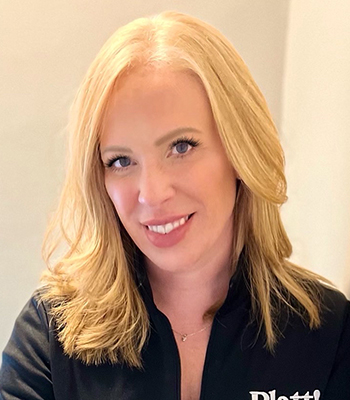
Higher costs for construction and building materials has Platt Insurance Group, which has offices in Howland and Sebring, focused on reviewing current policies regarding replacement costs for both commercial and residential clients, says owner Ellie Platt.
“A lot of times we’re seeing that they don’t have the coverage they need on the property,” Platt says. “If there was a total loss and we had to rebuild the property, there might not be enough coverage. So we’re encouraging all of our clients to review those replacement costs based on that fact.”
Among the factors property owners need to consider are higher property values driven by higher real estate prices, as well as home improvements made during 2021 that could earn discounts on premiums, Platt says.
Additionally, businesses must evaluate their work-at-home policies to ensure company equipment in employees’ homes is covered, as well as cyber liability in general.
Boutiques doing sales on social media need to ensure they are securing data, she adds.
Insurance-Driven Compliance
Mark Richmond, Micro Doctor IT

Insurance is having an impact on demand for services in the technology sector.
“We’re seeing a lot of insurance-driven compliance,” says Mark Richmond, president of Micro Doctor IT in Warren. Business liability insurance and cyber insurance require additional cybersecurity measures.
These include two- or multifactor authentications and ensuring clients have managed detection and response – or MDR – antivirus systems in place to stop ransomware attacks.
IT must navigate supply chain issues as well. Chip shortages have driven demand and scarcity for certain products, forcing Micro Doctor to use alternative suppliers, Richmond says. Prices are higher as well.
“Everybody’s paying a bit more not only for everyday items at the grocery store, but they’re paying more for technology. They’re paying more for services and everything else,” he says.
As virtual meetings become more prevalent, Richmond advises clients to take advantage of available tools.
People are becoming more comfortable with the platforms. Camera technology has improved and “we can actually have more of an in-person meeting experience,” he says.
With more people working from home, requests for productivity monitoring are up, he adds. “Business owners are looking for a way to make sure that they’re getting what they’re paying for.”
Feeling the Pinch
Deanna Rossi, Transamerica Financial Advisors
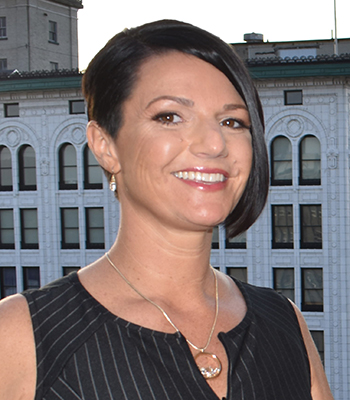
Many people haven’t yet felt the pinch of inflation and supply chain issues because of stimulus money and child tax credits they received in 2021.
This helped to “ease that tension of things getting more and more expensive,” says Deanna Rossi, investment adviser representative and branch office supervisor for Transamerica Financial Advisors Inc. in Youngstown.
Still, everyone needs to plan for inflation in 2022 and beyond, Rossi says. If a family makes $46,000 annually, it will need to bring in about $49,000 a year to compensate for inflation. Transamerica advises its members to reduce their debt or taxes, or find ways to increase their income.
“People need to have that personalized plan,” she says, “and they need to schedule time with a financial adviser to personalize that plan.”
For individuals worried about the cost of planning, she says they can access online planning calculators at no cost to help determine their future financial needs.
Guard Against Malware and Spam
Shane Nesbitt, Executive Computer Management Solutions Inc.
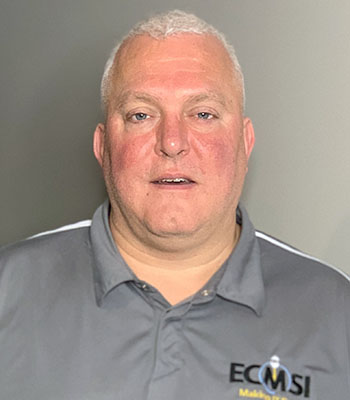
It’s just like your gas and electric bill. You’re going to have to fit into your budget a certain amount [for cybersecurity] on an annual basis,” says Shane Nesbitt, sales manager at Executive Computer Management Solutions Inc., or ECMSI, in Struthers. “It’s not just your next-door neighbor fixing your computer or data network anymore.”
ECMSI consultants advise clients on a range of issues involving cybersecurity, backup and disaster recovery, and information technology guidance, Nesbitt says.
“Malware still is probably the biggest threat in the marketplace,” he says. ECMSI ensures clients have a good managed email system with constant antivirus filtering, patch management and spam filtering. The company also works to keep clients’ operating systems current.
For remote-work situations, Nesbitt advises ensuring the connection back to the main system is secure and set up correctly. Company-owned devices at home should not be used by nonemployees and should have two-factor authentication to access email, he says.
Planning for Generational Shift
Molly Johnson, Johnson & Johnson
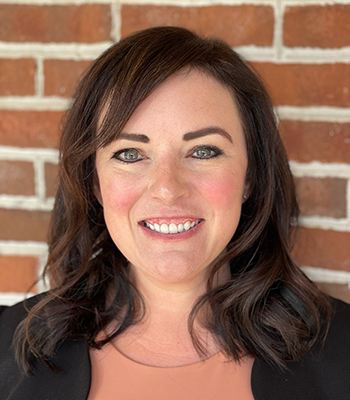
Molly Johnson, an attorney with the Johnson & Johnson law firm in Canfield who deals in real estate law and business planning, says many clients want to discuss what happens with their property after they die.
“We’re all tired of the phrase, ‘unprecedented times,’ right? But we have seen over the last year or two more people coming in and sort of facing their own mortality,” she says. Even younger individuals recognize that “life is a gift that can be really short,” she says,”and they need to plan for that, which, obviously, we would definitely recommend.”
Business planning involves short- and long-term goals, Johnson says. Business planning for a shift between senior and junior generations includes “figuring out how to get those seniors to transfer that down” to the next generation of leadership, whether family or otherwise.
A transfer within the family will look like “something entirely different,” she says. Because of tax restrictions, ownership can’t be transferred all at once without a “very large negative tax consequence.”
Johnson also advises new entities to look at grant money available through government stimulus packages and other government incentives. Local governments offer tax abatements and other incentives to encourage businesses to locate in their jurisdictions, as with the TJX HomeGoods distribution center in Lordstown. Johnson represented landowners who sold property for the project.
She also points to grants and tax incentives available for constructing a building or renovating one to make it more environmentally friendly.
Navigating Tax Changes
Judy Sees, Schroedel, Scullin & Bestic
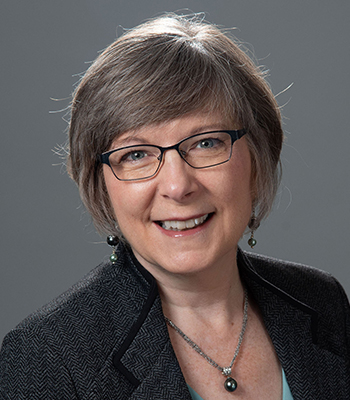
We generally plan with our clients throughout the year because you don’t want to be surprised,” says Judy Sees, principal with Schroedel, Scullin & Bestic LLC in Canfield. The accounting firm offers strategic advising and wealth management services. “If you’re planning, you shouldn’t be surprised about what your taxes are or how much income you made during the year,” she says.
This year, the standard federal deduction for couples filing jointly increases to $25,900 from 2021, and certain deductions, such as state and local taxes, are capped at $10,000, requiring more than $15,900 in other types of itemized deductions.
For clients who donate to charities, Sees recommends funding a donor-advised fund with a highly appreciated stock. They could also give $50,000 or $1000,000 to a donor-advised fund, claim the deduction in the current year and use the fund to make donations over the next several years.
SSB is getting calls about capital gains’ impact on tax brackets, Sees adds.
“If I’m in the 22% bracket and I’m trying to decide whether I want to take a retirement account distribution, if I’m able to stay within a 24% bracket for a while, it may make sense to do it,” she says. “But if I am jumping from 24% to 32%, I’m going to need to think twice – or maybe more times – about whether that makes sense.”
